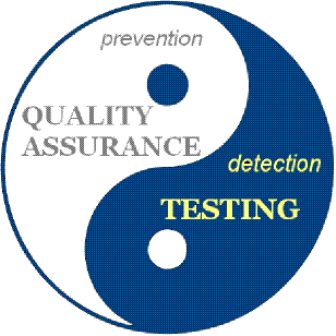What to Expect When You're Expecting Testing
Quality assurance (QA) and testing bridge technology and user experience design, giving a big picture understanding of projects, the systems behind the solutions, and the customer’s relationship with them. It adds value to the project’s process, not just by ensuring that they meet and exceed our standards of excellence but also by defining and maintaining the focus of the project team through the entire lifecycle. Earlier this year, we spoke with ImageX’s Quality Assurance Lead, Emil Zimmerman, to discuss his thoughts on the QA process, best practices, the role of our QA team, and how ImageX delivers the “wow” factor for our clients. In this blog post, we are going to explore what this means for our clients -- what QA is, and what they should be expecting from their agency during this phase of the development process.  QA ensures that the project’s objectives are being met and testing identifies defects in the project so that they can be corrected.
QA ensures that the project’s objectives are being met and testing identifies defects in the project so that they can be corrected.
QA versus Testing
QA and testing are similar tasks that are closely related, but that have a primary difference that separates them:- QA measures the quality of the product, recommends improvements, and ensures that it meets the customer’s requirements and standards throughout its lifecycle; and,
- Testing is more focused on finding ways to break the product so that any defects can be repaired before it is released to the customer.
 QA ensures that the project’s objectives are being met and testing identifies defects in the project so that they can be corrected.
QA ensures that the project’s objectives are being met and testing identifies defects in the project so that they can be corrected. What to Expect of Your Agency’s QA Team
Global IT solutions firm, Softtek, shared some of their best practices for an effective testing and QA implementation for their clients, which can be easily applied to most products, services, or projects. Here are some of the highlights:- It is critical that a process that is robust and certified by experts in order to initiate the QA culture is defined. The process will serve as a guideline that should iterate evolve over time with new learnings.
- Managerial commitment should come from the top down to ensure that each level is aligned. Everyone must be aware of the value that QA and testing add to the business and its clients. The process, therefore, must account for the value of the solutions that it offers to the organization.
- As part of the development, QA, and testing processes, it is necessary to define deliverables, such as requirements, a testing plan, and testing cases. These will guarantee that testers can effectively follow-up throughout the project.
- Both the use of tools for tracking and managing defects, as well as the creation of test cases and execution, are essential for increasing the maturity of the QA and testing process. The process may begin without tools, but they are a requisite for increasing execution maturity.
- Developing and creating metrics to track quality in its current state, as well as to compare any improvements with previous versions, will help increase the value and maturity of the testing process.
- Implementation of appropriate testing environments that allow developers to reproduce the system execution in production environments is crucial to the creation and execution of the corresponding test cases.
- The testing environment required for day-to-day operation should provide or ensure availability of the necessary data to enable the corresponding test execution. Even if you have developed the appropriate testing environments, developers need to access specific data required to execute the associated test cases. And like any other production environment, the testing environment should properly track changes in configuration, ensuring not only controlled results, but that the tests are run in environments that closely resemble those of the real production environment.
- It is critical to have an awareness process that includes management commitment at each and every business unit and for associated developers. The goal is to demonstrate that testing activities add value to their daily work.
“First, you must define what quality means. That’s the first question that every QA expert should ask -- what does it mean for us and our clients, and then you can find that middle ground where exciting things happen. Software QA shares many of the same goals of other industries; whatever applies to good quality elsewhere will here as well. To me, measuring great quality is simple -- it’s when the client says “wow”. That’s always the best metric. [...] “Being flexible is important. You need to adapt. If you try to stick to a particular method, you risk losing sight of the forest for the trees. You’re often working with a moving target, especially in an Agile environment, so you need to be aware of the big picture at all times and maintain that focus.”



